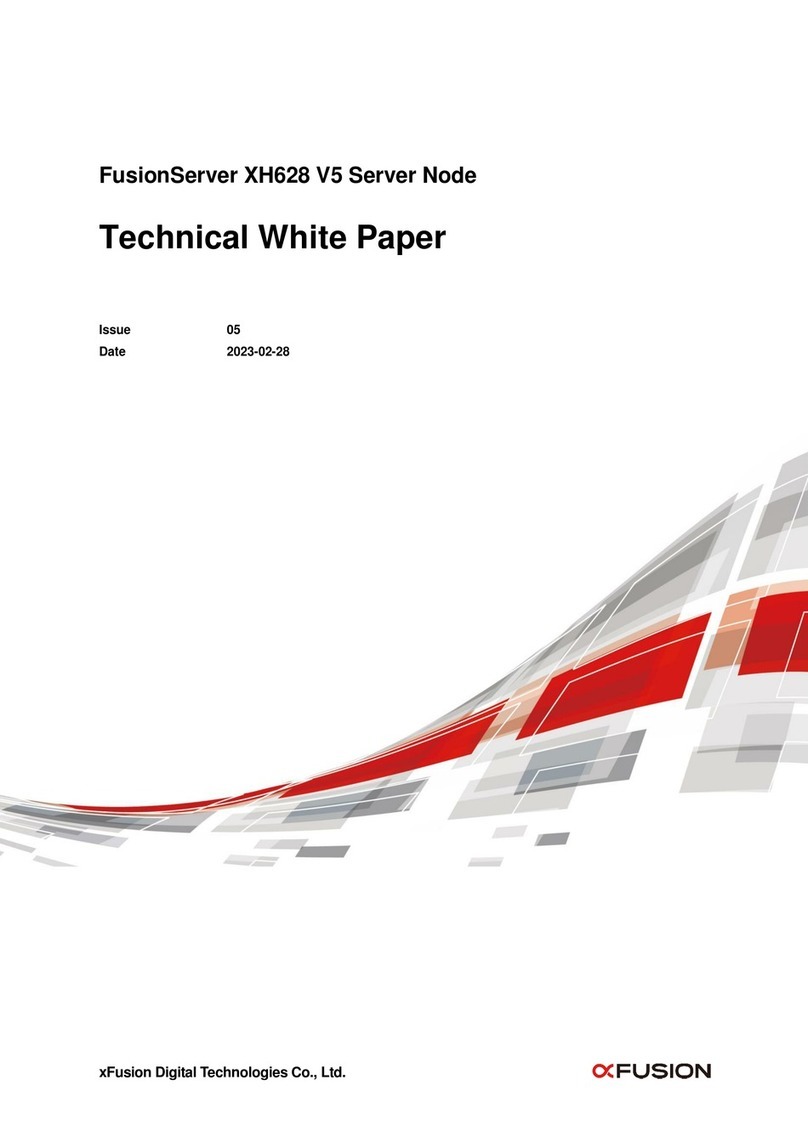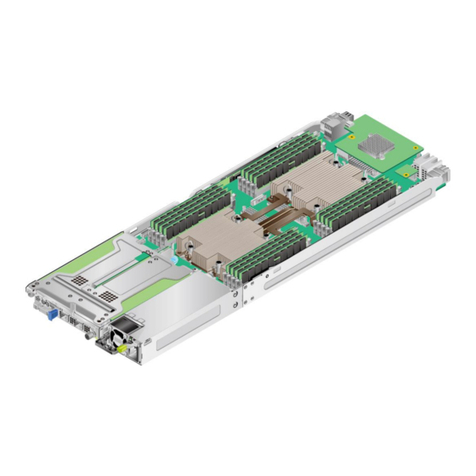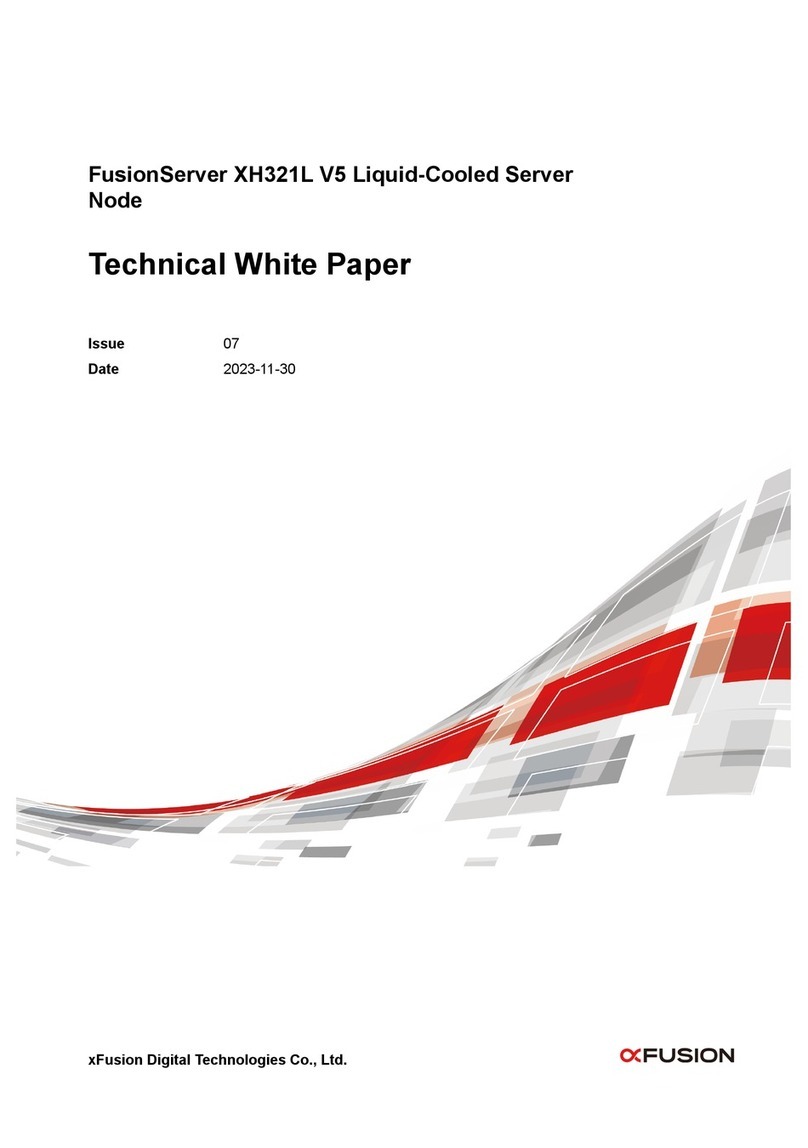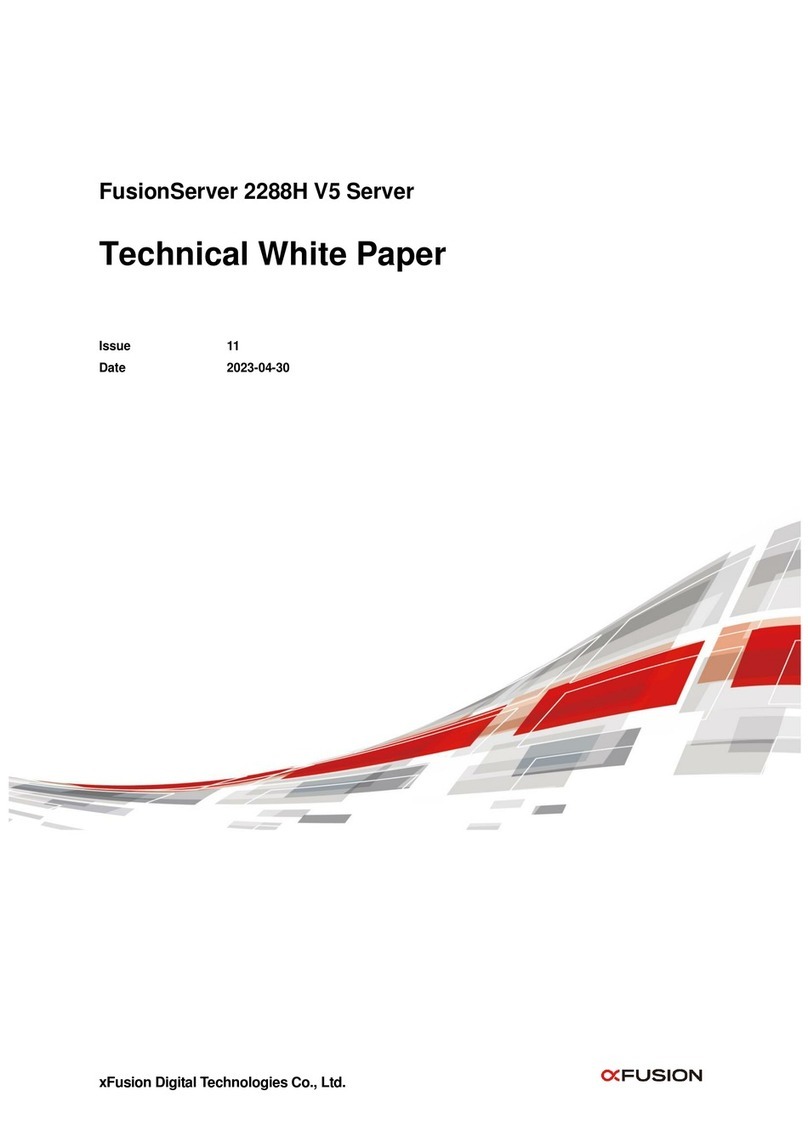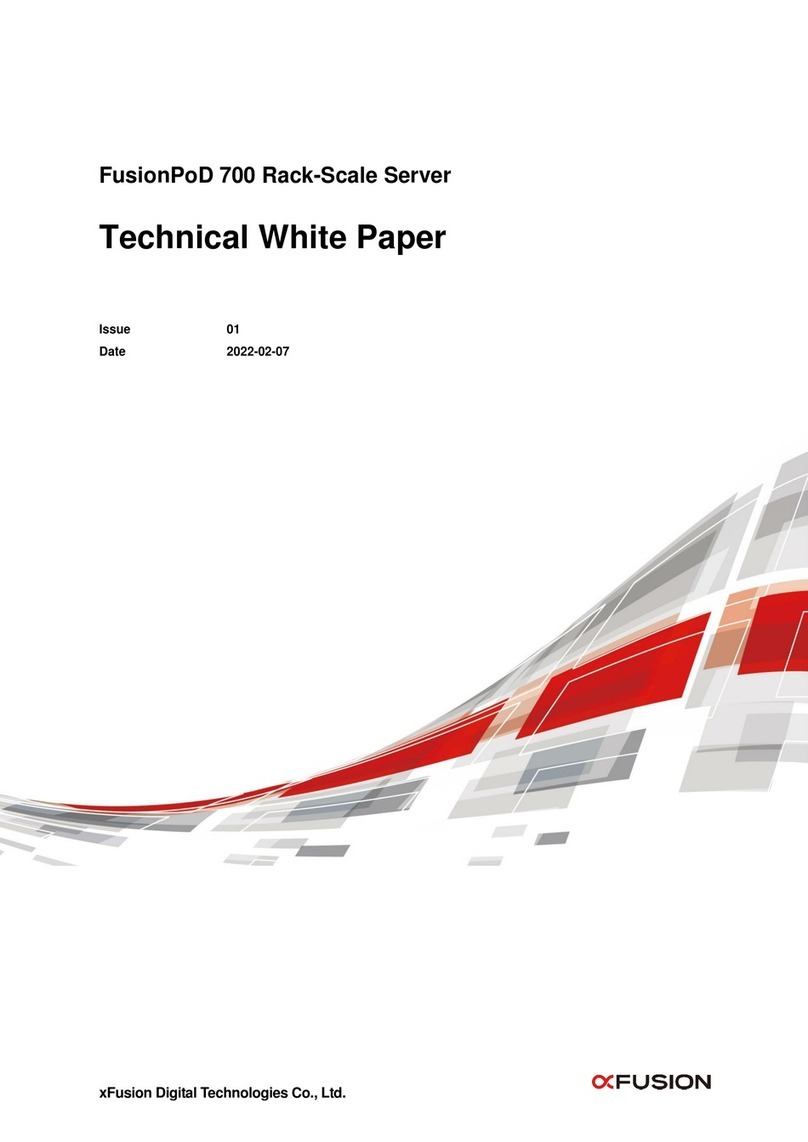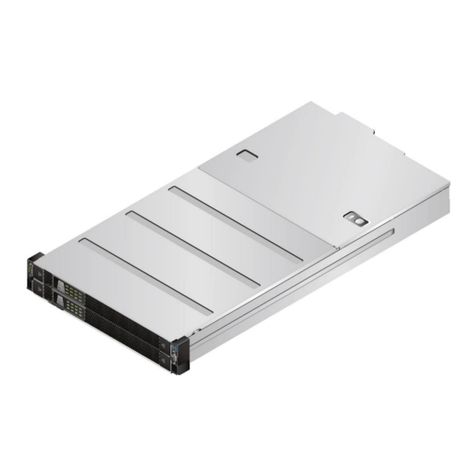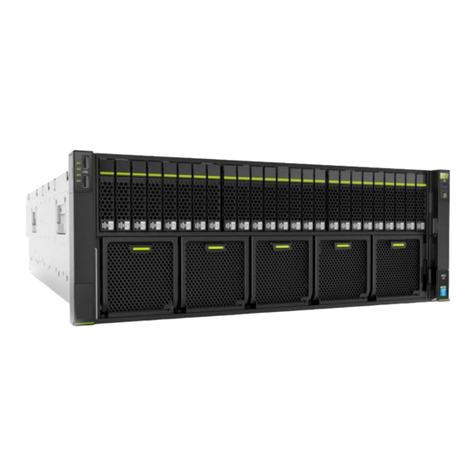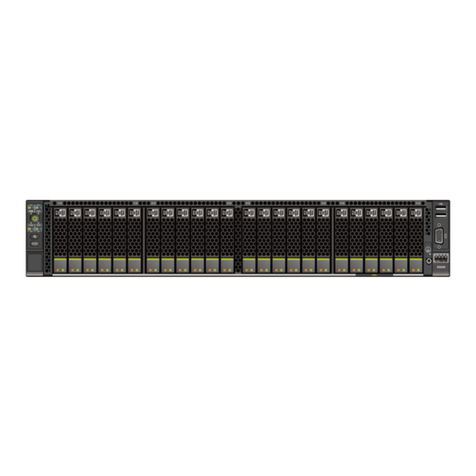⚫The use of all solid-state drives (SSDs) is supported. An SSD supports up to 100
times more I/O operations per second (IOPS) than a typical hard disk drive (HDD).
The use of all SSDs provides higher I/O performance than the use of all HDDs or
a combination of HDDs and SSDs.
⚫The LANs on motherboard (LOMs) and FlexIO cards provide a variety of ports to
meet different networking requirements.
⚫With Intel integrated I/O, the Intel®Xeon®Scalable processors integrate the PCIe
3.0 controller to shortens I/O latency and improve overall system performance.
⚫The server supports up to eight PCIe 3.0 slots.
Availability and Serviceability
⚫Carrier-class components with process expertise ensure high system reliability
and availability.
⚫The server uses hot-swappable SAS/SATA/NVMe drives. It supports RAID 0, 1,
1E, 10, 5, 50, 6, and 60, depending on the RAID controller card used. It also uses
a supercapacitor to protect the RAID cache data against power failures.
⚫The SSDs offer better reliability than HDDs, ensuring continued system
performance.
⚫The server provides simplified O&M and efficient troubleshooting through the
UID/HLYLED indicators on the front panel, fault diagnosis LED, and iBMC
WebUI.
⚫The iBMC monitors system parameters in real time, triggers alarms, and
performs recovery actions in case of failures, minimizing system downtime.
⚫For more information about the warranty in the Chinese market, see Warranty.
Manageability and Security
⚫The built-in iBMC monitors server operating status and provides remote
management.
⚫A password is required for accessing the BIOS, ensuring system boot and
management security.
⚫The Network Controller Sideband Interface (NC-SI) allows a network port to
serve as a management port and a service port for maximized return on
investment (ROI) for customers. The NC-SI feature is disabled by default and can
be enabled through the iBMC or BIOS.
⚫The integrated Unified Extensible Firmware Interface (UEFI) improves setup,
configuration, and update efficiency and simplifies fault handling.
⚫Lockable server chassis panel ensures security of local data.
⚫The Advanced Encryption Standard–New Instruction (AES NI) algorithm allows
faster and stronger encryption.
⚫Intel Execute Disable Bit (EDB) function prevents certain types of malicious buffer
overflow attacks when working with a supported OS.
⚫Intel Trusted Execution Technology enhances security using hardware-based
defense against malicious software attacks, allowing applications to run
independently.
⚫The trusted platform module (TPM) and trusted cryptography module (TCM)
provide advanced encryption functions, such as digital signatures and remote
authentication.
⚫The following requirements in NIST SP 800-147B are met:

